The Top 10 Swims of 2015 … So Far
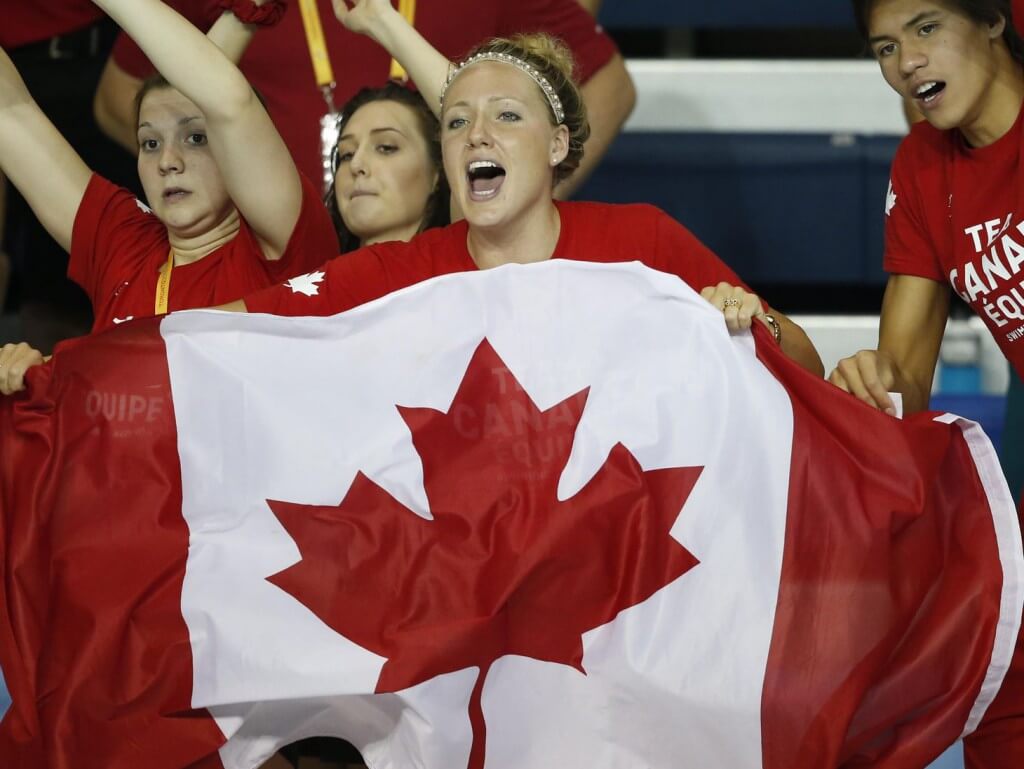
Commentary by Jeff Commings, Swimming World Senior Writer
Swimming World Magazine publishes a list of the top 10 performances of the year annually in the December issue. This year, several swims on that list will come from the world championships, the top international meet of 2015. As is often the case, so many worthy performances get bumped from that list from the moment swimming starts at the Big Meet.
We thought it best to list the best swims of 2015 before the world championships began, to show how incredible this year has been. From the NCAA championships to the Pan American Games and a few meets in between, the world has witnessed some jaw-dropping swims that could still resonate by year’s end. Here are the top 10 swims so far in 2015, listed chronologically:
1. Katie Ledecky chases 800 freestyle world record
After breaking five world records in 2014, including two during an “in-season” meet, we’ve started to expect Katie Ledecky to raise the bar every time she steps in the water. She got 2015 off to a great start in January at the Arena Pro Swim Series in Austin by chasing her world record of 8:11.00 in the 800 freestyle.
Ledecky put her foot on the gas hard before the halfway mark, turning less than a second faster than her record pace, and she was doing it with no one pushing her. That’s become typical for Ledecky, but to remain strong throughout a distance race when you are not in peak shape is not easy. Ledecky stayed tough to get more than a second under the pace at 500 meters.
The record pace began to catch Ledecky at 700 meters, when she tried to put in a final burst. Spurred on by the crowd, Ledecky made everyone excited with a final time of 8:11.21. Her final 100 meters was almost under 1:00, an amazing split no matter what time of the year it is.
Ledecky is almost certain to get under 8:11 at the world championships, and January’s swim is bound to encourage her to not only get under 8:11, but 8:10.
Katie Ledecky’s 8:11.21 in 800 free
2. Missy Franklin beats 200-yard freestyle American record
Missy Franklin was likely physically and mentally ready for the 2015 NCAA Division I championships for a couple of reasons. After a back injury that hampered her ability to swim her best at Pan Pacs, she was ready to show that she is still one of the best female swimmers in the world. Also, the NCAA championships would be her final competition as a collegiate swimmer. She turned pro immediately after the meet, something that was in the long-term plan since she announced UC-Berkeley as her college of choice.
The 200 freestyle at March’s NCAA championships was set up to be an epic battle between Franklin and Stanford’s Simone Manuel, who had pushed Franklin to a great swim a couple of weeks earlier at the Pac 12 championships. But Franklin crushed Manuel on the opening 100 yards to put the race away. At stake was the distinction of being the first woman under 1:40, and Franklin nearly skipped the 1:39s with a 1:39.10 to make the record untouchable for a while … unless Franklin takes a crack at it in the near future.
3. David Nolan cracks 1:40 in 200-yard individual medley
Ever since he set the bar high with a 1:41.39 in the 200 IM as a high school senior, David Nolan has been tapped as the Next Big Thing in the event, even predicted by some to replace Ryan Lochte and Michael Phelps. That hasn’t happened yet in the long course pool, but Nolan is now the fastest man in history in the yards version of the event, thanks to a historic swim at his final NCAA championships.
The first time people started talking about the 1:40 barrier in the 200 IM was back in 2007, when Lochte set the American record at 1:40.08. Bradley Ally got the closest in 2009 with a 1:40.49 at the 2009 NCAAs, fueled by the now-banned polyurethane full-body swimsuits.
At the Pac 12 championships, Nolan snuck under Lochte’s record with a 1:40.07, and instantly everyone believed a 1:39 was in the offing at the NCAA meet. Nolan didn’t disappoint, and if there was any doubt in his mind, he had an upstart rival to shake out the uncertainties.
Will Licon of Texas pushed Nolan for the entire race, almost surpassing Lochte on the all-time performers list with a 1:40.09. As exciting as Licon’s time was, it was virtually missed when the crowd saw “1:39.38” on the scoreboard next to Nolan’s name. Surely Nolan had been thinking of 1:39 before the Pac 12 championships, and to do it at his final NCAA championships had to be a major thrill.
With both the barrier and the win on the line, Nolan blasted the first half of the race, getting a full second under his American record pace. His breaststroke and freestyle splits were slower, but he built up an advantage that couldn’t be beaten.
No matter what lies ahead for Nolan in the pool, his barrier-busting swim is likely to be at or near the top of the list of an already astounding career.
4. Will Licon becomes second man under 1:50 in 200 breaststroke
Licon’s 200 IM was just the start of a breakthrough NCAA championships for the Texas junior. He upset Chase Kalisz in the 400 IM and produced a breaststroke split on the 400 medley relay that helped Texas take that event.
When the 200 breast came around, few thought he had the chops to pull off another upset. Though Kevin Cordes wasn’t swimming as fast as expected, no one (at least those outside the Texas camp) predicted Licon could join Cordes as the only two men under 1:50 in the event. Licon silenced those critics with a 1:49.54 in the 200 breast prelims, setting up an exciting battle in the final.
As Nolan did in the 200 IM, Cordes took the race out hard in the final and was on his American record pace for the first half. But that might have been too fast, as Licon began gaining ground on the third 50. While Cordes tried to maintain his well-known low stroke count, Licon continued to accelerate into the final 50 yards. Licon didn’t get ahead of the American record holder until the final two strokes, where he slayed the giant with a 1:49.48 to cement his place as the second-fastest man in history.
5. Grant Hackett makes Australian world championship team
Grant Hackett’s comeback to the sport took place about a year after Ian Thorpe quietly ended his. Where Thorpe’s ended without a spot on an international team, Hackett was determined to race internationally after a seven-year hiatus.
At the Australian national championships, Hackett was racing the 200 and 400 freestyles in a bid for a spot on the world championship team. If he made it, the then-34-year-old would be attending his sixth world championships, and first since 2007. Hackett finished third in the 400 free, two seconds off a spot on the team. His chances were better in the 200 freestyle, as Australia could pick as many as four from that final to fill the 800 free relay.
With Hackett in the 200 free final, all eyes were on him, though few thought he had a chance of winning. The field was close with 50 meters remaining, with six swimmers turning in the 1:19 range. Digging into his extensive training as a distance swimmer that got him on multiple Olympic podiums, Hackett found the will to get to the wall in fourth place to secure a spot on the world team.
The performance was amazing, given that Hackett had only been in serious training with coach Denis Cotterell for less than a year. He got back into the water primarily for fitness reasons, then took a “wait-and-see” approach as he built up his training base.
As far as comebacks go, Hackett’s return has to be one of the most successful in swimming history. We’ll see if it continues next year to the Olympics.
6. Adam Peaty breaks 100 breaststroke world record
Adam Peaty of Great Britain had been picked as the man to beat in the 100 breast long before he set the world record of 57.92. But now, he has a very large target on his back heading into the world championships.
Peaty’s world record race was astounding at the British nationals. He nearly broke 27 seconds at the 50-meter mark, and showed no sign that he had taken the race out too fast. His stroke rate increased, and he kept his body position high in the water. He broke Cameron Van Der Burgh’s world record by 54 hundredths of a seconds, largely on the strength of a 30.88 final 50 meters.
Peaty has been improving rapidly under the guidance of Melanie Marshall in the past two years, and at 20 years old, there is bound to be much more in the tank for the tall and muscular Brit. He said after his race that “I feel that 57.9 is just a start.”
Adam Peaty’s 57.92 100 breast
We’ll see what’s next in 10 days in Russia at the world championships.
7. Sarah Sjostrom scares 100 butterfly world record
Sarah Sjostrom tested the waters, so to speak, in the 100 butterfly in June, and came away with a 56.04 to post the second-fastest swim in history.
Sjostrom has had more bad luck than good in the 100 butterfly since she won the 2009 world title with a world record. She hasn’t won an Olympic medal in the event, and she faltered in the 2011 world championship final, giving Dana Vollmer the opportunity to step and take Sjostrom’s mantel.
Sjostrom appears to be back on track, and her 56.04 looked so effortless that it’s easy to think that a sub-56 is in the works for the world championships. With her holding the world record in the 50 fly and also being an ace in the 200 free, the 100 fly is looking like her optimal event in 2015 and beyond.
Sarah Sjostrom’s 56.04 in 100 fly
8. Santo Condorelli under 48 seconds in 100 freestyle
Santo Condorelli entered the upper ranks of the men’s global sprint scene in 47.98 seconds last week at the Pan American Games with his leadoff swim on Canada’s 400 freestyle relay. Before that swim, Condorelli got notice for his 48.57 that won him the silver medal in the 100 free final, but once he broke the 48-second barrier, he became the fastest man in the world (tied with Vlad Morozov). That makes Condorelli a marked man when he competes at his first world championships.
Condorelli spent the summer working with Coley Stickels at Canyons Aquatic Club, getting some crucial tips from the man who also made Abbey Weitzeil a breakout star. With more experience and more confidence, Condorelli could become a major player at next year’s Olympics. He’s only 20 years old, so there’s a very long career ahead of him.
Santo Condorelli’s 47.98 in 100 free
9. Katie Meili makes major 100 breaststroke breakthrough
When she posted a lifetime best 1:06.50 at the Arena Pro Swim Series in Charlotte in May, I was certain Katie Meili was going to go under 1:06 at the Pan American Games.
In prelims in Toronto, Meili blasted a 1:05.64 to rank second in the world and make her the fastest American in the event since 2013. The 24-year-old is exemplifying the phrase “age is just a number,” making big drops in her lifetime bests that are normally done in a swimmer’s mid- to late teens. And not a moment too soon. Now, she’s a serious contender for a spot on the Olympic team, but she’ll need to put together more than one fast swim. (She won the 100 breast at Pan Ams with a 1:06.26.)
10. Natalie Coughlin makes triumphant return to backstroke
Perhaps Natalie Coughlin was playing coy with us when she said she was giving up backstroke in this new chapter in her swimming career. Until this year, she barely gave backstroke a thought, only racing it a couple of times outside the United States.
Then, she almost broke 1:00 in a time trial in Charlotte in May. Even Coughlin, the 2004 and 2008 Olympic champion, couldn’t deny that she needed to put backstroke back into her repertoire.
In a bit of a surprise, Coughlin was picked as the backstroker for the USA’s 400 medley relay at the Pan American Games, and she proved she belonged there with a 59.20 in the prelims. Racing in the big final, Coughlin gave the global 100 backstroke field a jolt with a 59.05 to help the United States win the 400 medley relay. That’s likely to last through 2015 as one of the fastest swims of the year, especially among Americans.
Welcome back to the 100 backstroke, Nat!




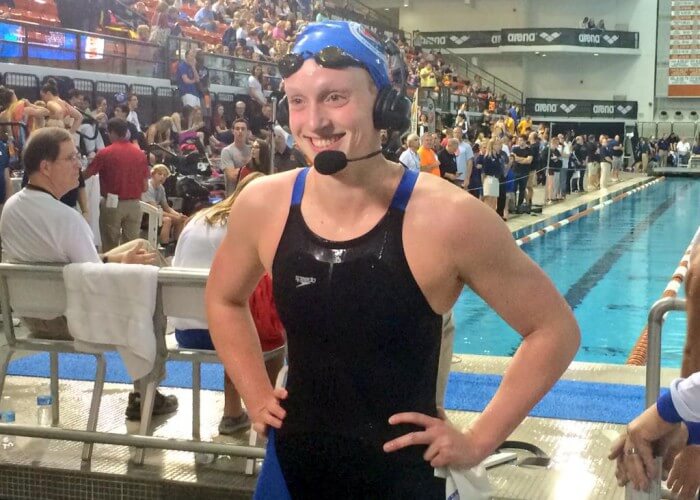
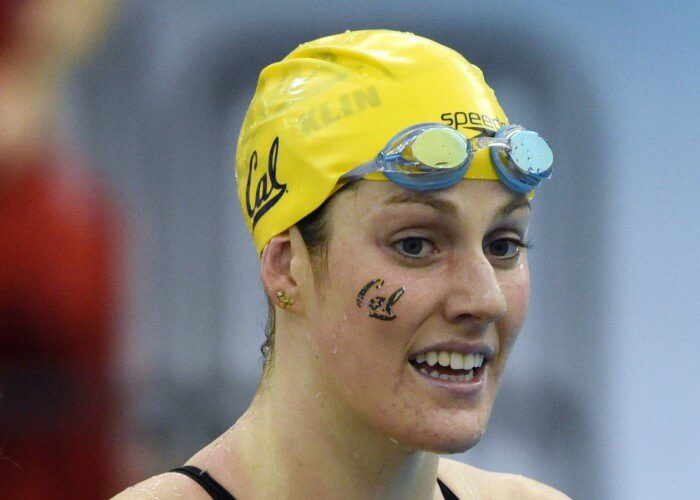

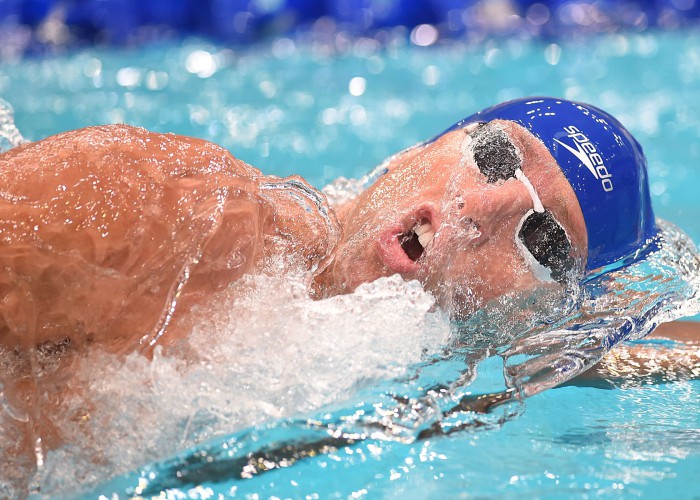
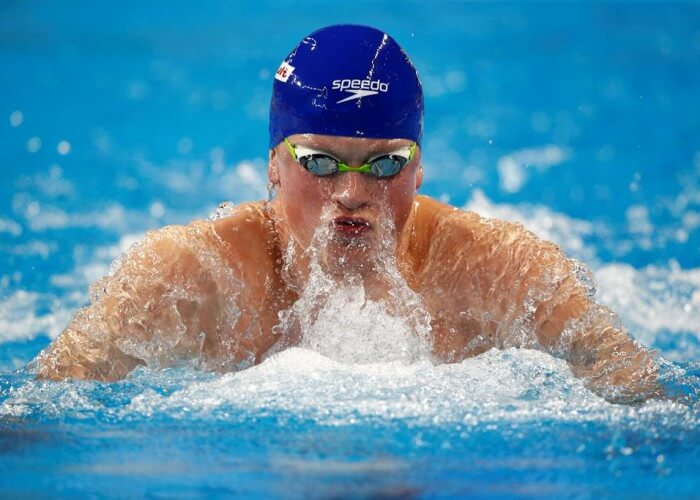
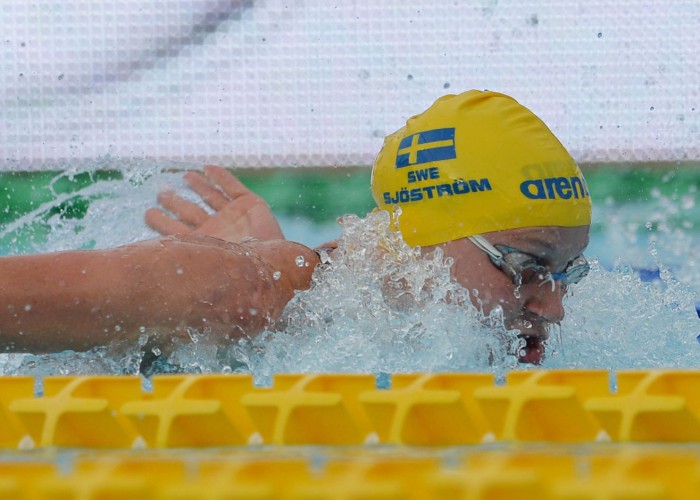
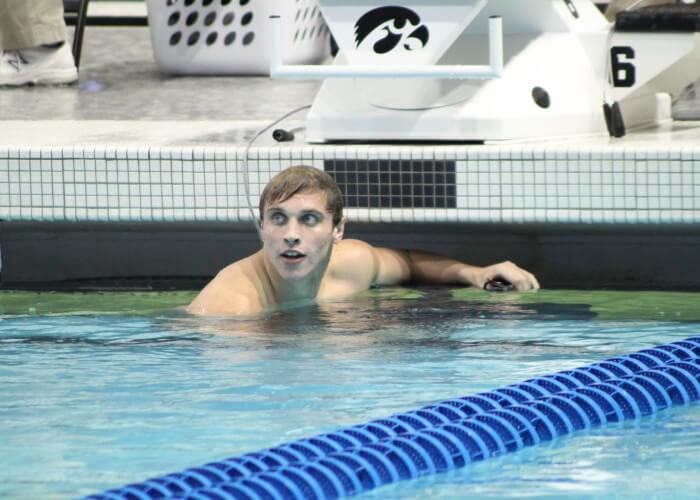

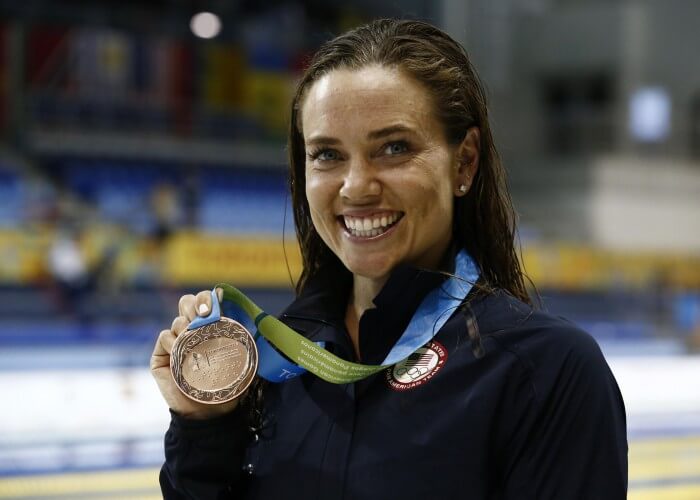
I’m not sure why SW is so enamored with the Condorelli swim to the detriment of better performances.
Meili 6th all time textile.
Coughlin 6th all time textile.
Condorelli 14T all time textile.
I understand what you’re saying, Duncan. As you can see, I was also “enamored” with Coughlin’s and Meili’s swims this year.
Frankly, Peaty’s swim crushed Van der burgh’s 3 year old world record by .54 seconds, a margin which has not been matched in breaking this record since 1973, when Henken’s 1:04.35 World Championship performance in Belgrade removed the Munich Olympic gold-winning 1:04.94 mark of Nobutaka Taguchi from the books.
The only potential swims even close would require opening the SCY/LCM debate, which would allow consideration of Misty and Nolan, as their swims far exceeded the best of textile world best LCM performers, Schmitt and Lochte.
But since we internationally bow to LCM, Peaty’s swim was the only world record on the year to date. It was the best. QED.
“Missy,” not “Misty”
Others that may have been good choices:
Mack Horton, 5th All-time Textile in 400, 6th All time Textile in 1500
Kosuke Hagino 4th all-time textile performer in both 400 IM and 200 IM
Koseki 7th all-time textile performer 200 Breast
Cate Campbell, 3rd all-time textile performer 50 free (aside from herself)
Femke Heemskerk / Cate Campbell 100 free at :52.69; only Sjostrom and 2014 Campbell faster in textile
Heemskerk, 200 free, 3rd fastest textile performer all time
Ledecky, 400 free, as with 800, only she has been faster in textile
Ledecky 1500, 2nd fastest textile performer all-time
Seebohm, 100 Back, 3rd fastest textile
Seebohm, 200 Back, 6th fastest textile all time
Meilityte, 100 breast, 3rd fastest textile all time, aside from herself
Watanabe, 200 breast, 6th fastest textile all time
Hentke, 200 Fly, As high as 5th all-time textile
Hosszu, 200 IM (4th all-time textile), 400 IM (2nd all time textile)
Manadou, 7th fastest textile 50 free
Biedermann, 10th all time fastest textile 200 free
Walker-Hebbron, 6th all-time fastesst textile 100 back
Irie, 6th fastest all time 200 back in textile
Czerniak, 6th all time textile 100 Fly
Seto, 200 fly, 6th all-time textile 200 Fly
While Condorelli is tied for 1st for 2015 so far, I believe his :47.98 is furthest down the all-time textile list (14T) of any 2015 event leader.